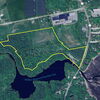Processing Your Payment
Please do not leave this page until complete. This can take a few moments.
- News
-
Editions
-
- Lists
-
Viewpoints
-
Our Events
-
Event Info
- Women's Leadership Forum 2025
- On the Road with Mainebiz in Bethel
- Health Care Forum 2025
- On The Road with Mainebiz in Greenville
- On The Road with Mainebiz in Waterville
- Small Business Forum 2025
- Outstanding Women in Business Reception 2025
- On The Road with Mainebiz in Bath
- 60 Ideas in 60 Minutes Portland 2025
- 40 Under 40 Awards Reception 2025
- On The Road with Mainebiz in Lewiston / Auburn
- 60 Ideas in 60 Minutes Bangor 2025
Award Honorees
- 2025 Business Leaders of the Year
- 2024 Women to Watch Honorees
- 2024 Business Leaders of the Year
- 2023 NextUp: 40 Under 40 Honorees
- 2023 Women to Watch Honorees
- 2023 Business Leaders of the Year
- 2022 NextUp: 40 Under 40 Honorees
- 2022 Women to Watch Honorees
- 2022 Business Leaders of the Year
-
-
Calendar
-
Biz Marketplace
- News
-
Editions
View Digital Editions
Biweekly Issues
- April 21, 2025 Edition
- April 7, 2025
- March 24, 2025
- March 10, 2025
- Feb. 24, 2025
- Feb. 10, 2025
- + More
Special Editions
- Lists
- Viewpoints
-
Our Events
Event Info
- View all Events
- Women's Leadership Forum 2025
- On the Road with Mainebiz in Bethel
- Health Care Forum 2025
- On The Road with Mainebiz in Greenville
- On The Road with Mainebiz in Waterville
- + More
Award Honorees
- 2025 Business Leaders of the Year
- 2024 Women to Watch Honorees
- 2024 Business Leaders of the Year
- 2023 NextUp: 40 Under 40 Honorees
- 2023 Women to Watch Honorees
- 2023 Business Leaders of the Year
- + More
- 2022 NextUp: 40 Under 40 Honorees
- 2022 Women to Watch Honorees
- 2022 Business Leaders of the Year
- Nomination Forms
- Calendar
- Biz Marketplace
Lobster population has declined, but they're bigger, new study shows
The population of lobsters in the Gulf of Maine has spread out and declined in the nearly three decades since 1995.
But the average size of an adult lobster was greater in 2021 than in 1996, according to a University of Maine study.
The changes are occurring amid a third trend — more lobsters are migrating from boulder shelter habitats, which they’ve historically favored, into sediment or featureless ledge habitats, both of which have little to no geological features to use as shelters.
The knowledge is useful for informing longtime conservation efforts and regulations within the more than $740 million fishery, according to a news release.
Climate factors
The habitat changes could be due to climate, UMaine scientists say.
Water temperatures increased nearly 3 degrees Celsius, or 1.8 degrees Fahrenheit, during the study period across the lobster habitats.
Kelp abundance declined across lobster habitats, while diminutive algal turfs — small green mats containing multiple species of algae — increased.
For decades, the vast majority of adult lobsters resided in boulder shelter habitats.
The scientists found occupancy of boulder habitats dropped 60%.
Meanwhile, the number of lobsters residing in sediment or featureless ledge habitats, both of which have little to no geological features to use as shelters, increased 633% and 280%, respectively.
Lobster population density across all types of habitats declined, meaning they are fewer in number and their populations are more spread out.
“These differences in the way lobsters use their habitats provide context for the lobster stock assessment that helps to determine the health of the entire lobster population,” said Robert Jarrett, lead author of the study and marine biology Ph.D. student.
“Some of the annual lobster surveys used in the assessment, like those from the Maine Department of Marine Resources, are restricted in the types of habitats that they can sample, so these findings about habitat help fill in some information gaps and show that over time the lobsters may be shifting between which surveys catch them better.”
Lobsters are now favoring open spaces within their habitats over rocky shelters than previously. The percentage of lobsters living under rocky shelters dropped 34% from 2000 through 2019, while those using no shelter at all increased 168%.
The number of lobsters that reside underneath beds of algae has grown 160%.
According to researchers, demographic shifts among Gulf of Maine lobsters — habitat, size and population density — may have resulted from a drop in baby lobsters surviving to the seafloor and less competition between individual lobsters.
A lack of predators might have also influenced more lobsters to move away from boulders to more open habitats, forgoing rock shelters for cover with only algae to hide under.
Larger lobsters
The team investigated 20 sites along Maine’s coast, from York to Jonesport. They dove 10 meters, or 32 feet, below the surface to count and measure lobsters, as well as to collect data on habitat and temperature.
The team also reviewed historic data for the same sites dating back to the 1990s.
While overall population density has declined, the average size of an adult lobster was greater in 2021 than in 1996. According to the study, the increase in size is partially the result of fewer juvenile lobsters residing in these habitats.
While lobsters in the Gulf of Maine are now larger, the team observed that the majority, or 93%, were still smaller than 83 millimeters, or 3.2 inches, the minimum legal size to be caught and sold — which the report said is a promising sign for the fishery.
Jarrett and his colleagues published their findings in the journal Marine Ecology Progress Series.Co-authors include Damian Brady, Agatha B. Darling Professor of Oceanography; Richard Wahle, former director of the Lobster Institute, and Bob Steneck, professor emeritus of oceanography, marine biology and marine policy.














0 Comments